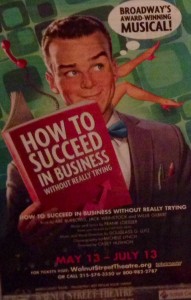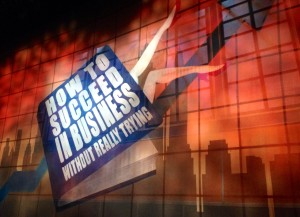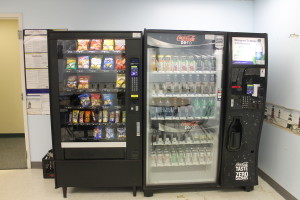How Customers Buy: The DNA of the customer buying journey
Official Center for Education and Employment Law January 2017 Sweepstakes Rules (“Sweepstakes”)
Official Center for Education and Employment Law January 2017 Sweepstakes Rules (“Sweepstakes”)
NO PURCHASE NECESSARY. No purchase or payment of any kind is necessary to enter or win this Sweepstakes. Purchasing a product does not increase odds of winning.
- Eligibility. To enter you must be eighteen (18) years old or older at the time of entry. Valid only in Washington, D.C. and the fifty (50) United States. This Sweepstakes is subject to all applicable federal, state, municipal and local laws. Void where prohibited by law. Employees, interns, and contractors of Center for Education and Employment Law (“Sponsor”), and its parent company, affiliates, and their respective directors, officers, advertising and promotion agencies, representatives, and agents, and their immediate families (parents, siblings, children, spouses, domestic partners) and members of the households of such employees, officers and directors are not eligible. Sponsor reserves the right to disqualify an entry if there is evidence of cheating, deception, abuse or failure to abide by Google review guidelines. Participants submitting a Google review must abide by Google review policies; the review rules and policies may be found here: goo.gl/gM3Nry. The review must be visible on the Sponsor’s public Google reviews page at 4:00 PM EST on May 31, 2017.
- Odds. Chances of winning are based on the number of eligible entries received.
- Sweepstakes duration. Sweepstakes begins on January 9, 2017 at 12:00 AM EST and concludes at 4:00 PM EST on May 31, 2017.
- Prize. One (1) winner will be randomly selected to receive a prize of one (1) Dunkin’ Donuts gift card valued at twenty-five dollars (Verifiable retail value: $25.00). Sponsor reserves the right, in its sole and absolute discretion, to instead provide a different prize of equal or greater value. To the extent permitted by law, all taxes imposed on prizes are the sole responsibility of the winner.
- Winner selection and notification. Winner of Sweepstakes will be selected via random drawing at 12:00 PM EST on June 14, 2017. Winner will be notified by email or phone call within five (5) days following the winner selection. If the selected winner cannot be contacted, is ineligible or fails to claim the prize within fifteen (15) days from the time an award notification was sent, the prize may be forfeited and an alternate winner selected. There will be one prize out of one notice distributed. Prize will be delivered to winner not more than ten (10) days after notification.
- How to enter. To qualify, you must either: a) leave a review for Center for Education and Employment Law page on Google Maps (during Sweepstakes duration) found here: https://goo.gl/gFmemy or, b) mail your entry to: RE: CEEL January 2017 Sweepstakes, 370 Technology Drive, Malvern, PA 19355 and inside include your name, title, company, email address and phone number; postmark must be no later than May 31, 2017. Only one entry allowed per person.
- Technical problems. Sponsor is not responsible for technical errors, including but not limited to hardware failure, hacking, virus, bug, worm or other technical issues.
- Disputes. THIS SWEEPSTAKES IS GOVERNED BY THE LAWS OF THE UNITED STATES OF AMERICA AND PENNSYLVANIA, WITHOUT RESPECT TO CONFLICT OF LAW DOCTRINES. Except where prohibited, participants in Sweepstakes agree not to hold Sponsor, its parent company, affiliates, interns or employees responsible for damages or harm caused by participating in Sweepstakes; claims and disputes which cannot be settled individually will be resolved in the appropriate court located in Pennsylvania; participant waives right to any form of class action. Further, in any such dispute, under no circumstances will participant be permitted to obtain awards for, and hereby waives all rights to claim punitive, incidental, or consequential damages, including reasonable attorneys’ fees, other than participant’s actual out-of-pocket expenses (i.e. costs associated with entering this Sweepstakes), and participant further waives all rights to have damages multiplied or increased.
- Winners List. To obtain a copy of the winner’s name after the random drawing, or a copy of these Official Rules at any time, mail your request to: RE: CEEL January 2017 Sweepstakes, 370 Technology Drive, Malvern, PA 19355.
5 reasons PBP’s new vending machines and coffee service are awesome
We’re super-excited about the latest additions to our employee break rooms. [Read more…]
Progressive Business Publication Scam Alert: Phishing, Vishing & SMiShing
Progressive Business Publication Scam Alert
Identity thieves are constantly creating new ways to scam unsuspecting people. That’s why it’s essential to recognize the three most common technology-related scams known as Phishing, Vishing and SMiShing.
Phishing scams use email, while Vishing attacks come over land telephones. SMiShing scams target the users of mobile devices.
The common element to all three scams is to collect confidential personal and financial information.
Here’s a closer look at how they work.
Phising is an attempt to get your password or credit card number by sending out phony email that looks like it comes from a trustworthy entity, usually a bank but possibly also a social website, an online payment processor or even an IT company. The phony email contains a link to a site that looks and feels like a real company.
If you click the link and go to the site, you’re directed to enter financial or other details, even to log in if it’s a mock up of your real bank site.
But even if you do none of these, the site has probably already downloaded malware onto your computer to try to capture your private information.
The term Phising is derived from fishing, and is a reference to baiting a victim into biting on a malicious link, etc.
Vishing scams use Internet-based telephone systems to gain access to private and personal data. The term comes from “voice” and phishing. It goes like this: You answer the phone and an automated recording informs you your credit card, or maybe your bank account, had suspicious or fraudulent activity and you need to call a certain number right away.
The recording tells you the number to call and says your account or card has been deactivated until further notice. When you call, you get another recording telling you to enter your bank or credit card number on the key pad to confirm who you are. Don’t do it.
This kind of scam is also used to get a security PIN, expiration date, date of birth, etc.
SMiShing is similar to the other scams, but uses cell phone text messages to deliver the bait and get someone to divulge personal information. The name is a combination of Short Message Service technology and phishing.
The hook in this scam is a website or phone number the user is required to connect with.
SmiShing often involves something that needs immediate attention, such as confirming you’ve signed up for a discounted subscription, and you’ll be charged $8 a day unless you cancel the order. Then it gives you a phone number to call to cancel.
Of course, you can’t cancel without entering your vital personal and financial information, which is the raison d’etre behind the scam in the first place.
A recent variation of this involved retail giant WalMart, which issued a fraud alert regarding a large number of SmiShing texts that offered a phony $1,000 gift card as bait.
The key to handling all three of these scams requires the same reality check: If you feel a need to contact your bank or credit card company, use the number on the back of your credit card or call or visit a branch office you know for sure is real!
An approach to incentives that gets results
Adapted from The Internet & Marketing Report.
Who doesn’t like incentives!
They are all the rage, and any employee worth his or her own salt wants to be incentivized as often as possible. Right?
Well, that’s always been the widespread belief — and practice — in spite of tons of research that suggests incentives aren’t so good at improving performance in the long-run on anything other than the most repetitive and mundane task. That’s because it’s thought that being too focused on the reward can cloud the creative process.
However, a recent Harvard University study found that adding a little wrinkle dramatically improves student performance: give teachers a reward upfront and threaten to take it away if performance doesn’t actually improve.
It’s what’s known as loss-aversion — that people are more motivated by the thought that something could be taken away if they don’t achieve a goal. For managers and executives, exploiting this loss-aversion tendency could open the door to better performance in all parts of any organization.
The Harvard study suggests pay-for-performance has a dismal record of improving student outcomes. Teachers who were offered sizable bundles of cash didn’t help their students any better than teachers who simply worked out of the goodness of their impoverished hearts.
But to lose something, that’s different! People will scale the highest mountains to hang onto what they already possess. For instance, researchers found people will pay more than twice as much money to keep a coffee mug they were given than to acquire it in the first place.
These ideas hold exciting possibilities for business. Marketers, for instance, could offer discounts, samples or add-ons for free, but revoke them if customers don’t maintain a standing order, or write a favorable online review.
On a wider scale, why not hand out bonus pay at the beginning of the year? Nobody wants to give it back.
Customers are the boss: 4 ways to WOW them
Adapted from The Customer Service Advantage.
Most customers will remember how you made them feel as much as what you actually did for them. It’s proof the entire experience matters. That’s why it’s important to try to improve every customer interaction, so that overall experience is outstanding.
Here is an approach known as ICE, or the Ideal Customer Experience, developed and used by the folks at ING Direct USA. ICE can benefit any employee who deals directly with customers, from marketing to sales to service.
A personality gauge
To understand customers better – and thus meet or exceed their needs – “personality gauging” is essential.
Most customers fall into one of four categories, based on what they want from a company and its customer service professionals: Controller, Thinker, Feeler and Entertainer.
It’s pays to try to identify these customer types early in the process so you can try to tailor style to best meet their needs.
Controllers – They cut to the chase, explaining their issue or asking their question quickly and precisely. They often explain exactly what they want. Controllers want a quick and timely response. If an answer isn’t immediately available, be sure to let them know you will contact them ASAP with accurate answers.
Thinkers – They want to know and understand the process, usually asking a lot of detailed questions. Be sure to walk Thinkers through the details of what they do, what will happen next and offer to follow up.
Feelers – They need to know everything will be all right. They ask about outcomes and often sound concerned. Make these people feel comfortable by getting them focused quickly on identifying solutions and outcomes, continually using reassuring language.
Entertainers – They’re usually less businesslike and have a carefree attitude about solutions, but they still want results! For them, stay on task but don’t be afraid to engage in some small talk and amusement.
What everyone wants
Despite their differences in personalities, all customers still want the same things – solutions and timely, accurate, positive answers.
Front line folks should:
- Use positive language. Avoid “no” and “not.” Say things such as, “What I can do …?”
- Be advocates. Tell customers, “I will take care of this for you.”
- Anchor. Give customers an alternative when what they want isn’t possible.



